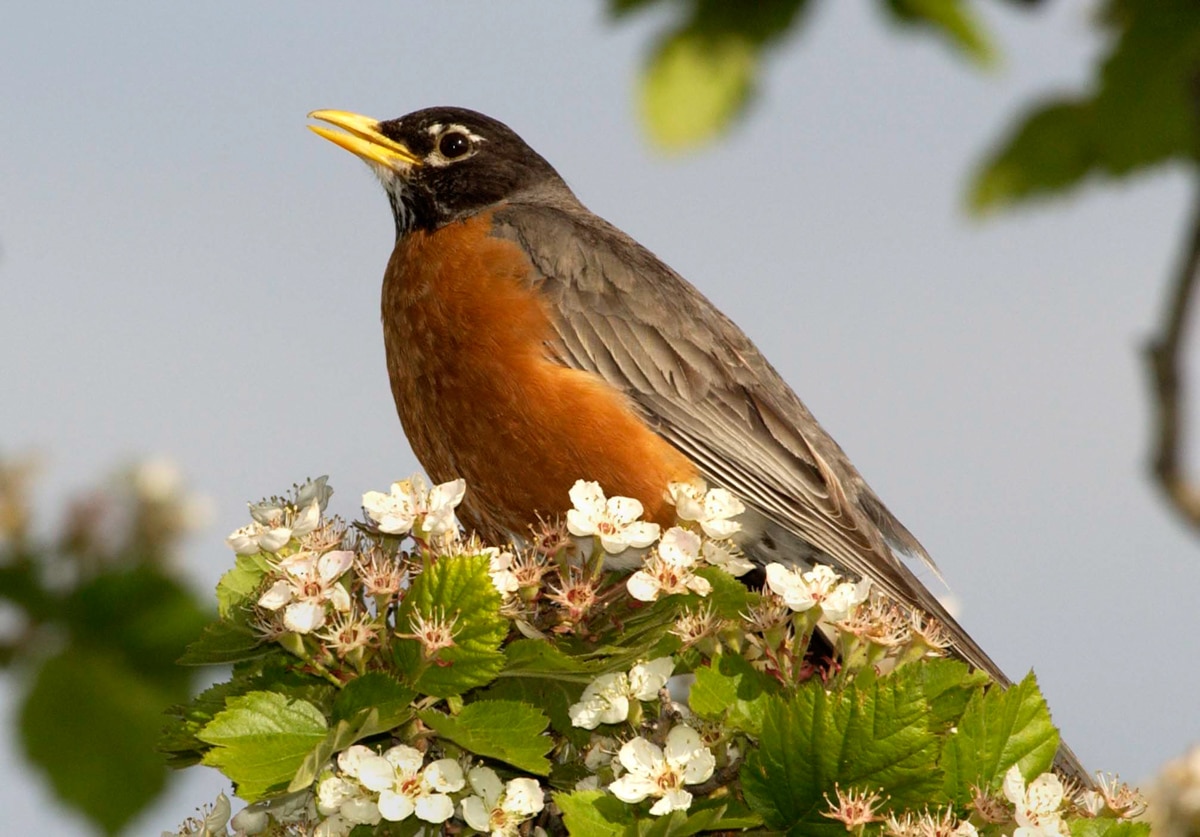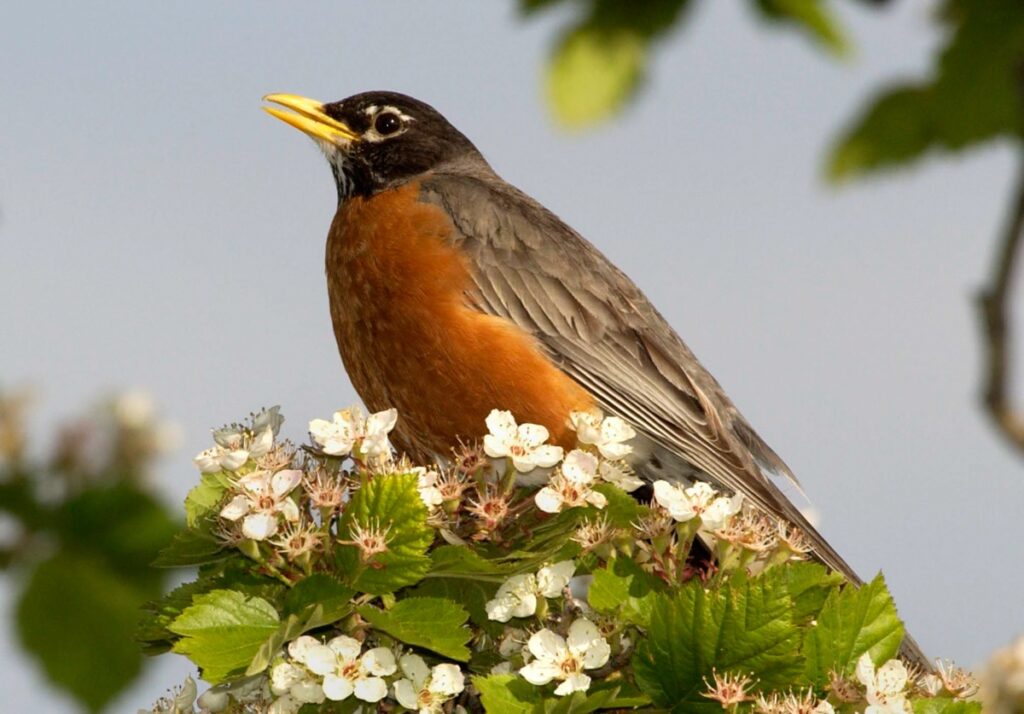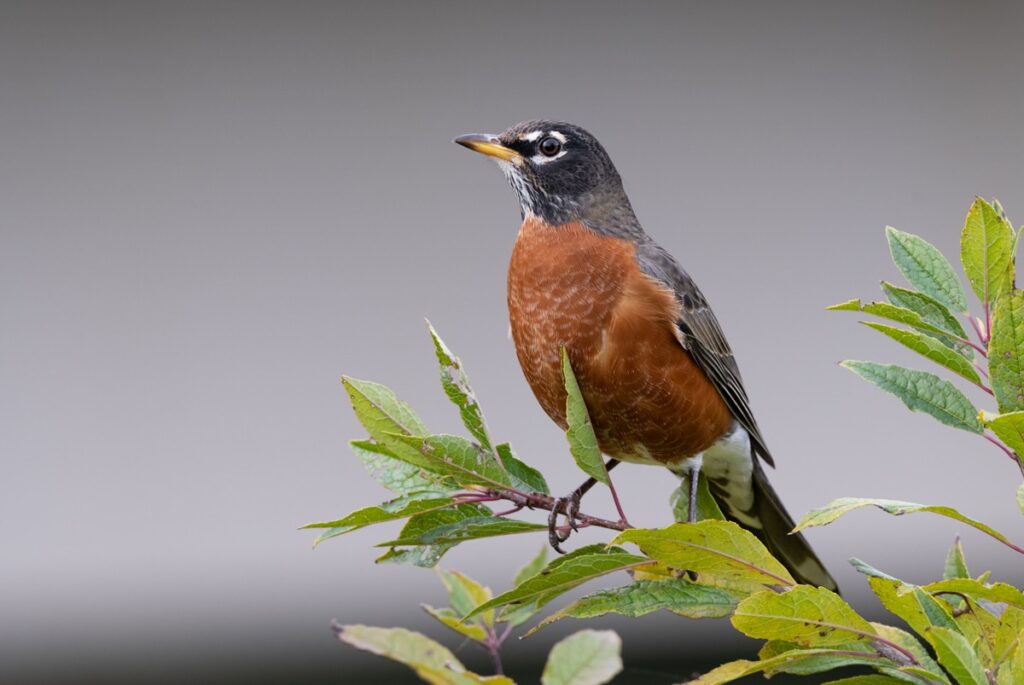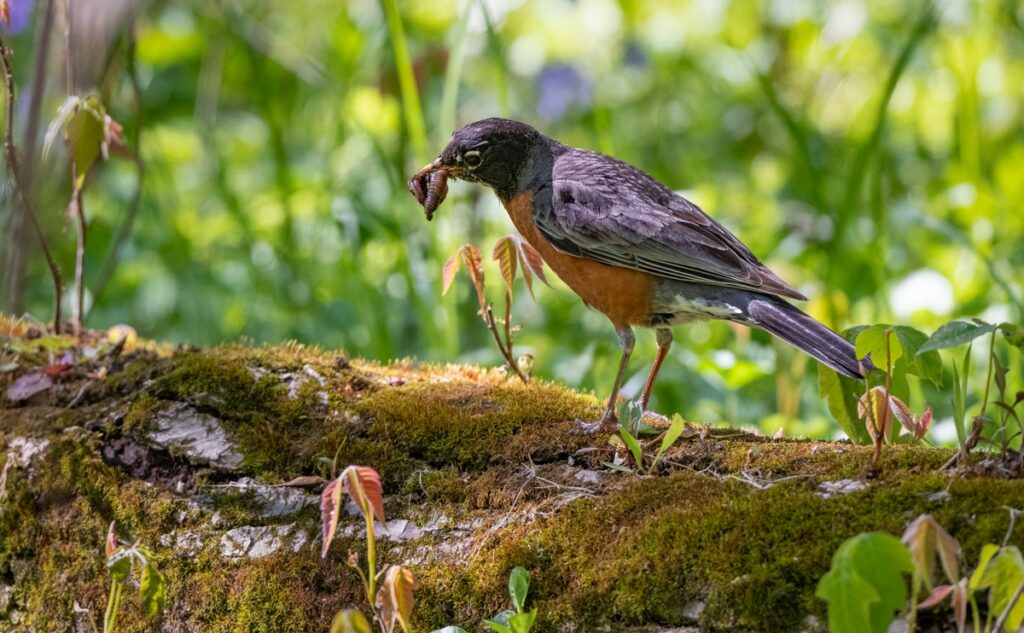
One of the most familiar spring birds, American robins are often seen as heralds of the changing season and warming temperatures. This is not exactly accurate, however, and there is much more to these iconic birds’ migration patterns than simple spring changes. The better you understand American robins, the better you can photograph just how amazing these birds truly are.

About American Robins
The American robin (Turdus migratorius) is a type of thrush, closely related to bluebirds and other thrushes, including the varied thrush, veery, and hermit thrush. Ironically, American robins are named for European robins – European colonists noted the similar coloration and upright posture of both birds when naming the American robin – but is not closely related to that namesake.
These common birds are easily recognizable, and their popularity has led them to be honored as the official state bird of Connecticut, Michigan, and Wisconsin. Their overall range extends far beyond just these states, however, as American robins are widespread into northernmost Canada and Alaska, other than the most barren tundra habitats. To the south, these birds spread into central Mexico, western Cuba, and The Bahamas during the winter months.

Do American Robins Migrate?
It is a common misconception that all American robins migrate in spring and fall. In fact, many of these birds in the 48 continental United States never migrate at all, instead enjoying the same range in all four seasons. In the very northern areas of most states, as well as throughout Canada, these birds do migrate south for warmer regions in the winter.
Those warmer regions include southern Texas and along the Gulf Coast into the Florida peninsula, as well as in southeastern California and southwestern Arizona, areas where American robins are generally only winter visitors.

The exact timing and extent of this migration will vary, however. In mild winters, American robins stay much further north than may be expected, especially if fruit crops were good and they can still find adequate food. The presence of feeding stations can also entice the birds to stay nearby, but will not stop them from migrating during harsher seasons.
American robins will be on the move at the earliest opportunity, as snow melts, open ground becomes visible, and the top layer of soil softens enough for worms and other insects to be active. These birds stalk insects with their keen hearing and vision, and photographing American robins as they forage is a great way to capture their intense concentration and determination.

Because American robins may migrate right at the edges of winter, however, a sudden storm or cold snap can be devastating. This is when a feeding station, heated bird bath, or brush pile can be essential, offering the birds emergency support. At the same time, such a situation offers backyard bird photographers an excellent opportunity for intimate photos of these charming birds and a chance to learn even more about birds we always thought we already knew.


